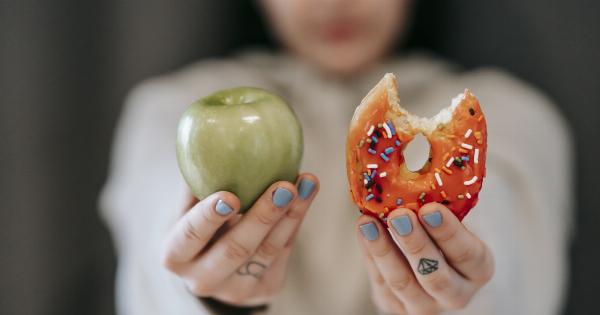As parents, one of our responsibilities is to ensure our children maintain a healthy lifestyle, which includes managing their sugar intake.
Excessive sugar consumption can lead to various health issues, such as obesity, tooth decay, and an increased risk of chronic diseases. While it may seem challenging to control your kids’ sugar intake, implementing a few mindful strategies can make a significant difference.
In this article, we will discuss effective ways to manage and reduce your children’s sugar consumption.
Understanding the Dangers of Excessive Sugar Intake
Sugar, especially in the form of added sugars, provides no nutritional value and can harm your child’s health. Too much sugar consumption can lead to weight gain, energy crashes, mood swings, and a weakened immune system.
Additionally, a diet high in sugar increases the risk of developing type 2 diabetes and heart disease later in life. By understanding the dangers associated with excessive sugar intake, parents can take proactive steps to protect their children’s health.
Lead by Example
Children often mimic their parents’ behavior, so it is crucial for parents to set a good example by consuming a limited amount of sugar themselves. Show your kids that you can enjoy a balanced diet without indulging in excessive sweets.
Choose healthier alternatives such as fruits, vegetables, and whole grains, and avoid keeping a stash of sugary snacks at home. Leading by example will encourage your children to follow suit and make healthier choices.
Educate Your Children
Taking the time to educate your children about the negative effects of excessive sugar consumption can empower them to make better choices. Explain to them how sugar affects their bodies, emphasizing the importance of moderation.
Teach them how to read nutrition labels and understand the various names for sugar, such as high fructose corn syrup, sucrose, and glucose. By providing them with knowledge, you enable them to make informed decisions when it comes to their food choices.
Limit Sugary Drinks
Sugary beverages, including soda, fruit juices, and sports drinks, are one of the main sources of added sugars in children’s diets. These drinks provide empty calories and can lead to weight gain and dental problems.
Encourage your children to drink water, unsweetened milk, or natural fruit juices instead. Limiting sugary drinks is an excellent way to reduce their overall sugar intake and promote healthier hydration habits.
Read Labels Carefully
Whether you’re grocery shopping for snacks or preparing meals at home, it is essential to read labels carefully. Often, foods marketed as “healthy” or “low fat” can be loaded with added sugars.
Check the ingredient list and the nutrition facts panel to identify the sugar content in the product. Be aware of alternative names for sugar, such as dextrose, fructose, and maltose. Opt for foods with little to no added sugars or choose natural alternatives like fresh fruits and vegetables.
Encourage Homemade Meals
Preparing homemade meals allows you to have greater control over the ingredients and sugar content. By cooking at home, you can avoid processed foods that are often packed with hidden sugars.
Involve your children in the cooking process and teach them how to make nutritious meals from scratch. This not only helps reduce their sugar intake but also fosters a love for cooking and a healthier relationship with food.
Promote Healthy Snacks
Children love to snack throughout the day, and unfortunately, many snacks marketed towards children are high in sugar. Encourage your kids to snack on wholesome options such as fresh fruits, vegetables with dip, yogurt, nuts, and homemade granola bars.
By providing healthy snack alternatives and limiting access to sugary snacks, you can help them form better snacking habits and curb their sugar cravings.
Be Mindful of Hidden Sugars
It’s not just the obvious sugary treats that contribute to your children’s sugar intake. Many processed foods, such as cereals, sauces, condiments, and even bread, can contain substantial amounts of added sugars.
Be mindful of these hidden sugars when shopping for groceries and opt for low-sugar or sugar-free alternatives. Gradually reducing your reliance on processed foods can significantly lower your kids’ overall sugar intake.
Make Treats Occasional
While it’s important not to completely deprive your children of treats, it’s equally crucial to make them occasional indulgences rather than everyday occurrences.
Reserve sugary snacks and desserts for special occasions or as rewards for accomplishments. By treating sweets as a special treat, your children will begin to develop a healthier relationship with sugar and appreciate it more when they do have it.
Set Clear Boundaries
Establishing clear boundaries regarding sugar consumption can help your children stay on track. Discuss and agree upon specific rules, such as limiting desserts to certain days of the week or having only one sugary snack per day.
Set a positive environment where your children feel supported in their efforts to reduce sugar intake rather than feeling restricted. By involving them in the decision-making process, they are more likely to adhere to the guidelines willingly.
Lead a Healthy and Active Lifestyle
Encouraging your children to lead a healthy and active lifestyle is crucial in controlling their sugar intake. Regular physical activity not only provides numerous health benefits but also reduces feelings of cravings for sugary foods.
Engage in family activities that involve movement, such as bike rides, nature walks, or even dancing together. By promoting a balanced and active lifestyle, you can divert your children’s attention from sugary temptations.




























